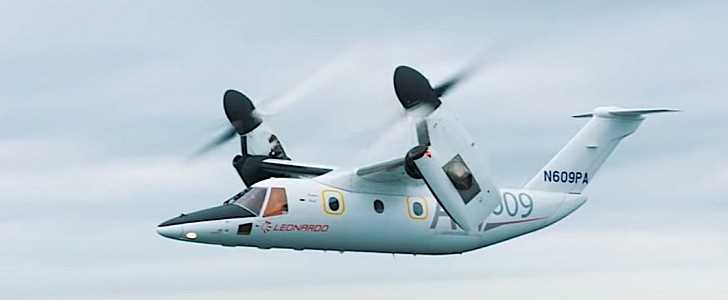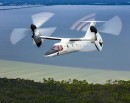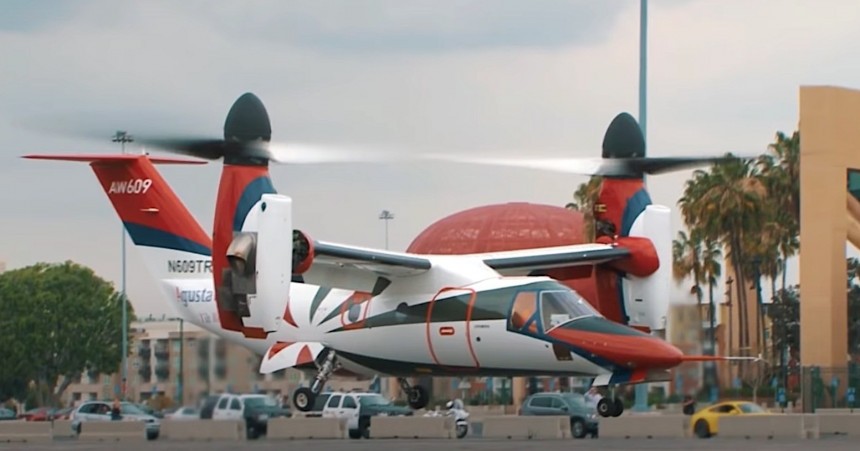The modern world offers many ways for civilians to travel in the sky. One can board an airplane or a helicopter, can climb inside the nacelle of a hot-air balloon, or can even dangle precariously underneath a paraglider. But try as one might, one cannot take to the sky inside a tiltrotor. For now.
A tiltrotor is a type of flying machine that blends the advantages of a helicopter, like say vertical take-off and landing, with those of a fixed-wing, propeller aircraft, like say cruising at higher altitudes. It’s a concept that has been around for a long time, but never really took off (pun intended) the way it would have deserved.
Believe it or not, the civilian market presently has exactly zero tiltrotors flying. If we move over to the military side, we get just one currently in operation, the V-22 Osprey, and a bunch of others on the way, like the V-280.
And the absence of a tiltrotor for the civilians is not from the lack of trying. Companies have been at it for close to two decades now, but they are only now giving us hope we’re soon going to have one.
Thanks to joint work performed by Bell, AgustaWestland, and Leonardo, we’ll soon be getting our first taste of civilian tiltrotor flight, in the form of the AW609. How soon? Well, think as soon as next year, when the machine is expected to receive FAA certification.
The contraption was designed as a means to move people from point A to point B by taking advantage of a tiltrotor capability for taking off, landing and cruising. It s generally aimed at the business sector, but it can easily be incorporated into emergency services, and even military operations.
Shaped not unlike the Osprey, the AW609 (we do hope they come up with a better, more commercial model name for it) is powered by a pair of Pratt & Whitney engines, sitting inside their own nacelles on each side of the aircraft.
The engines spin two large rotors, fast enough to be able to take the machine to a cruising speed of 500 kph (311 mph), and for distances that can be 1,852 km (1,151 miles) long.
The AW609 can fly at altitudes of up to 25,000 feet without having to worry about icing thanks to the special system it is fitted with. If need be, it can stay airborne with just one engine running, thanks to the One Engine Inoperative (OEI) and autorotation capabilities.
Made from high-strength composites, the entire tiltrotor weighs enough to be included in the 8 ton class. It can carry two crew and nine passengers but, as said, it is highly configurable, and in extreme situations up to 12 people can climb on board.
In the standard, transport layout, the AW609 can be designed to whatever requirements its operator needs fulfilled, with a “variety of VIP seating options to allow up to eight passengers,” and a 5 feet (1.5 meter) aisle between rows.
When configured for medical or rescue needs, the tiltrotor can accommodate through the wide cabin door a 600-pound (272 kg) hoist, but also two stretchers. The interior can be equipped with most of the medical hardware needed during such missions.
Leonardo, the company now tasked with making the bird a reality, says it could also be used for “counterterrorism, quick reaction force insertion/extraction, hostage rescue, incident management and law enforcement.”
The AW609 was shown earlier this month at the Dubai Airshow, where it also performed an aerial demonstration. Next year, the FAA certification is expected, and in preparation of that the company announced the model would be marketed under the Agusta brand. An exact date for the start of sales and pricing are not yet known.
Believe it or not, the civilian market presently has exactly zero tiltrotors flying. If we move over to the military side, we get just one currently in operation, the V-22 Osprey, and a bunch of others on the way, like the V-280.
And the absence of a tiltrotor for the civilians is not from the lack of trying. Companies have been at it for close to two decades now, but they are only now giving us hope we’re soon going to have one.
Thanks to joint work performed by Bell, AgustaWestland, and Leonardo, we’ll soon be getting our first taste of civilian tiltrotor flight, in the form of the AW609. How soon? Well, think as soon as next year, when the machine is expected to receive FAA certification.
Shaped not unlike the Osprey, the AW609 (we do hope they come up with a better, more commercial model name for it) is powered by a pair of Pratt & Whitney engines, sitting inside their own nacelles on each side of the aircraft.
The engines spin two large rotors, fast enough to be able to take the machine to a cruising speed of 500 kph (311 mph), and for distances that can be 1,852 km (1,151 miles) long.
The AW609 can fly at altitudes of up to 25,000 feet without having to worry about icing thanks to the special system it is fitted with. If need be, it can stay airborne with just one engine running, thanks to the One Engine Inoperative (OEI) and autorotation capabilities.
In the standard, transport layout, the AW609 can be designed to whatever requirements its operator needs fulfilled, with a “variety of VIP seating options to allow up to eight passengers,” and a 5 feet (1.5 meter) aisle between rows.
When configured for medical or rescue needs, the tiltrotor can accommodate through the wide cabin door a 600-pound (272 kg) hoist, but also two stretchers. The interior can be equipped with most of the medical hardware needed during such missions.
Leonardo, the company now tasked with making the bird a reality, says it could also be used for “counterterrorism, quick reaction force insertion/extraction, hostage rescue, incident management and law enforcement.”
The AW609 was shown earlier this month at the Dubai Airshow, where it also performed an aerial demonstration. Next year, the FAA certification is expected, and in preparation of that the company announced the model would be marketed under the Agusta brand. An exact date for the start of sales and pricing are not yet known.



















